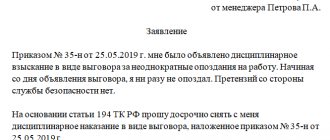What is a promissory note and what are the requirements for it? How is interest on a loan calculated if it is not indicated? And most importantly, how to collect a debt on a receipt in court and pre-trial? We'll talk about all this in our article.
In practice, most citizens, when issuing loans to other individuals, very rarely enter into full written agreements. Although, according to the Civil Code, a loan agreement between citizens in the amount of 10,000 rubles or more must be concluded in writing.
Typically, the borrower issues a promissory note to confirm receipt of funds. But in order for the creditor to later be able to collect funds from the debtor, the document must meet certain requirements.
Requirements for a promissory note
If there is a written agreement, and the receipt only confirms the fact of transfer of funds, then it is sufficient to indicate in it that on a certain date the lender transferred, and the borrower accepted, under the loan agreement (number, date) funds in the amount of (specify the amount) and undertakes to return them within the terms and conditions established in the loan agreement. In addition, the borrower must sign it.
Required items
If there is no written agreement, and the receipt is the only evidence of the origin of the borrowing relationship, then it must indicate:
- date and place of drawing up the document,
- information about the lender and borrower, their full name, place of registration, passport details,
- loan amount (in numbers and words),
- loan terms (repayment period, interest rate),
- acceptance of borrowers' funds and obligation to repay them,
- signatures of the creditor and debtor, and their decoding.
If there is no loan repayment period , then the loan must be repaid within 30 days from the date of presentation of the request (clause 1 of Article 810 of the Civil Code of the Russian Federation).
If the receipt does not mention interest , then a loan in the amount of no more than 100,000 rubles is considered interest-free.
If the loan is considered interest-bearing , but the receipt does not indicate the amount of interest, then it is determined in the amount of the key rate of the Central Bank of the Russian Federation in force during the relevant periods.
It is very important to indicate the loan amount and information about the parties in the receipt.
The most important thing is that it should clearly follow from the contents of the note that the money is not being transferred as a gift, not as payment for goods or services, but temporarily on the terms of return.
For example, the court refused to collect the debt, since the contents of the document did not indicate that the funds were received by the defendant as a loan; the receipt did not contain an obligation to return them (Appeal ruling of the Moscow City Court dated November 14, 2019 in case No. 33-48893/2019) .
What role does a receipt play when repaying a debt?
A receipt is a written document that confirms the transfer of money from one person to another.
It contains information about the fact of delivery of funds, the allocated amount and the date when the borrower must repay the debt. In fact, this is a loan agreement.
The document acts as proof that the person took the money. Ideally, the paper should be notarized, but current legislation does not oblige individuals to use the services of notaries.
In general, those who do not draw up a receipt also have a chance to get the loan back, but this is much more difficult to do and only if there is evidence of money being transferred from one account to another.
Deadline for collection of funds according to receipt
A general limitation period of three years applies to loan repayments. How to calculate it?
If the receipt indicates the loan repayment period, the statute of limitations begins to run the next day after the expiration of the repayment period. If the period is not specified, then the statute of limitations is counted after 30 days from the date of sending the lender’s request to repay the loan.
But the court will apply the statute of limitations only if the defendant declares so. Therefore, if you are the defendant, claim the statute of limitations before the court makes a decision.
Pre-trial procedure for debt collection by receipt
The lender may try to recover funds from the borrower out of court. To do this, draw up and send a claim to the debtor.
In your complaint please indicate:
- information about the parties to the loan agreement,
- the fact that the borrower has received funds,
- the loan repayment deadline has arrived,
- demand for its return.
Send the claim by mail with notification or hand it to the debtor in person.
If the loan repayment period is not specified, then before going to court you must send the borrower a written request to repay the loan, wait 30 days, and only after that go to court.
How to collect a debt on a receipt in court
The statement of claim is filed with the district court at the defendant’s place of residence.
If the loan amount together with interest does not exceed 50,000 rubles, then contact the magistrate.
After the court decision comes into force (one month after the decision is made, unless an appeal is filed), you can receive a writ of execution to present it to the bailiff service.
Magistrates also have jurisdiction over cases of issuing a court order. A court order is issued for monetary claims of no more than 500,000 rubles, based on a written transaction. A court order is an executive document. But not all courts recognize the receipt as an indisputable requirement.
If the amount of the claim is no more than 100,000 rubles, then the case can be considered through simplified proceedings without calling the parties.
To correctly determine the jurisdiction of the dispute and draw up a statement, contact a lawyer.
How to properly file a claim for debt collection using a receipt
When filing both a claim and an application for a court order, you must pay a state fee. Its size depends on the amount of the claim.
In the statement of claim, please indicate:
- name of the court,
- information about the plaintiff and defendant,
- circumstances of the loan,
- demand for loan repayment.
Attention! If the loan amount is indicated in the receipt in a foreign currency (currency of the debt), then you have the right to collect it only in Russian rubles (currency of payment) in an amount equivalent to the currency of the debt at the exchange rate of the Central Bank of the Russian Federation on the date of execution of the court decision. (Resolution of the Plenum of the Armed Forces of the Russian Federation No. 54 of November 22, 2016).
- requirement to pay interest for using a loan (if the loan is interest-bearing), interest on the basis of Art. 395 of the Civil Code of the Russian Federation for late loan repayment,
Attention! The obligation to pay interest on the loan amount (penalty) in the amount provided for in clause 1 of Art. 395 of the Civil Code from the day when it should have been returned until the day it is returned to the lender, arises in case of delay in obligations, regardless of the payment of interest provided for in paragraph 1 of Art. 809 of the Civil Code, for the use of a loan (Definition of the Armed Forces of the Russian Federation dated September 5, 2016 No. 4-KG15-75).
- signature.
What documents should be attached to the claim?
Attach to the application a copy of the receipt, a receipt for payment of the state fee (request for deferment), as well as evidence of sending the claim to the defendant.
In addition, evidence of the issuance of the loan and its terms may include:
- audio or video recording,
- recording of a telephone conversation.
Submit your application to the court by mail or via the Internet by filling out a special form on the website.
claim for debt collection
2021 sample
View document
Tips and rules for debtor behavior
Often, the borrower, realizing that he cannot cope with the timely fulfillment of the obligation, begins to hide. Then the creditor naturally begins active and sometimes radical collection actions. In such cases, it is better to take constructive steps:
- Discuss the current situation with the creditor. Offer your options for repaying the debt.
- If it was not possible to reach a settlement agreement, appear in court to hear the case. Explain and justify your position by providing evidence that your financial situation does not allow you to pay on time. In practice, judges look favorably on defendants who make contact.
There is no point in hiding or changing your place of residence or phone numbers. The creditor has the right not only to go to court, but also to repay the debt to collectors. At the same time, an attempt to evade responsibility for assumed obligations may be regarded as fraud.
There are several ways to collect a debt from an individual under a receipt. However, it is not always worth taking the case to court. If the amount of debt is small, it is better to agree on an installment plan or restructuring.
What to do if the borrower is bankrupt
If the borrower is declared bankrupt, the loan is collected in accordance with bankruptcy law.
After the introduction of debt restructuring, the deadline for the fulfillment of all obligations is considered to have arrived, and the accrual of penalties stops.
To be able to collect the debt, the borrower must submit an application to the arbitration court to include his claims in the register of creditors' claims within two months from the date of publication of the application declaring the debtor bankrupt (in the Kommersant newspaper). You can also track the information on the Fedresurs website.
To correctly draw up an application and prove the existence of a debt, contact a lawyer.
We have prepared a detailed article on how to recover money by initiating bankruptcy proceedings for the debtor. Useful material for lenders - we recommend you read it!
Are you a creditor and do you need protection of your interests in court? Sign up for a consultation!
Sign up
How to challenge a receipt for lack of money
The presence of a receipt from the lender is confirmation of the borrower’s failure to fulfill the obligations of the borrower to repay the loan, unless otherwise proven (Decision of the Supreme Court of the Russian Federation dated February 13, 2018 No. 41-KG17-39; Appeal determination of the Moscow City Court dated November 28, 2019 No. 33-51586/2019) .
The loan agreement is considered concluded from the moment the money is transferred. The debtor can challenge the loan by proving that in reality the funds were not provided to him.
Evidence may include:
- information about the financial situation of the creditor, which does not allow him to provide the loan amount indicated in the receipt,
- witness's testimonies,
- information about the lack of funds from the debtor after the issuance of the receipt.
Attention! In itself, the argument that the lender does not have a sufficient amount of money is not a basis for recognizing the loan agreement as non-monetary (Appeal ruling of the Moscow Court dated July 22, 2019 in case No. 33-12511/2019).
But in case of bankruptcy of the debtor, the reality of issuing funds to close relatives and other affiliated persons, on the basis of a receipt, can be challenged by the financial manager or bankruptcy creditor as an imaginary transaction precisely on the basis of the above signs.
The courts also take into account such signs as the issuance of further loans in the conditions of non-repayment of previously issued amounts, the failure of the creditor to take measures to claim the loan amount. If the court determines that the note is fictitious, it will refuse to include the creditor’s claims in the register (resolution of the Moscow District Court of April 30, 2019 in case No. A40-243525/17).
People often turn to their friends, relatives, and colleagues for cash in order to avoid taking out a bank loan. As a rule, borrowers in such situations try to repay their debt on time and in full in order to maintain normal human relationships and not burden themselves with unnecessary legal and personal problems. However, not everyone succeeds and not always.
Then lenders have to one way or another return their money on a claim, through the court, the bailiff service, or even using the services of collection agencies.
In fact, there are a large number of options for civil transactions, the failure of which may result in receivables. But in practice, disputes about the collection of the loan amount against a receipt are especially common, since this is the most popular type of civil dispute about the collection of funds between individuals. People often borrow money from their loved ones and, unfortunately, are not always able to repay it on time or in full.
How to prove the fact of debt
In court, it will be important for a citizen to establish the very fact of transfer of money. Repaying a debt without a receipt is complicated by the fact that citizens rarely have material evidence confirming the existence of a contractual relationship. Legal entities communicate by sending correspondence, but ordinary people negotiate by telephone or in person.
If a citizen makes voice recordings of conversations or conducts video recording, then he must indicate when and under what circumstances the information is recorded. The recording should not be interrupted, otherwise the court will have doubts about its reliability.
Correspondence on social networks is often used. The citizen should print out the screenshots and submit them to the court. The reliability of the data can be checked directly during the meeting using a smartphone or laptop.
Before collecting the debt, the creditor writes messages to the counterparty to the transaction. For example, he clarifies when he is going to transfer the money. Or asks how you can get a debt. If the addressee does not deny the existence of a debt and asks for a deferred payment, then in the future this circumstance can be referred to as recognition of the conclusion of an agreement.
The lender may refer to witness testimony. Perhaps citizens witnessed a discussion between the debtor and the creditor regarding the timing of the return of money or interest for their use. This information can be used in court to confirm that a transaction was completed.








